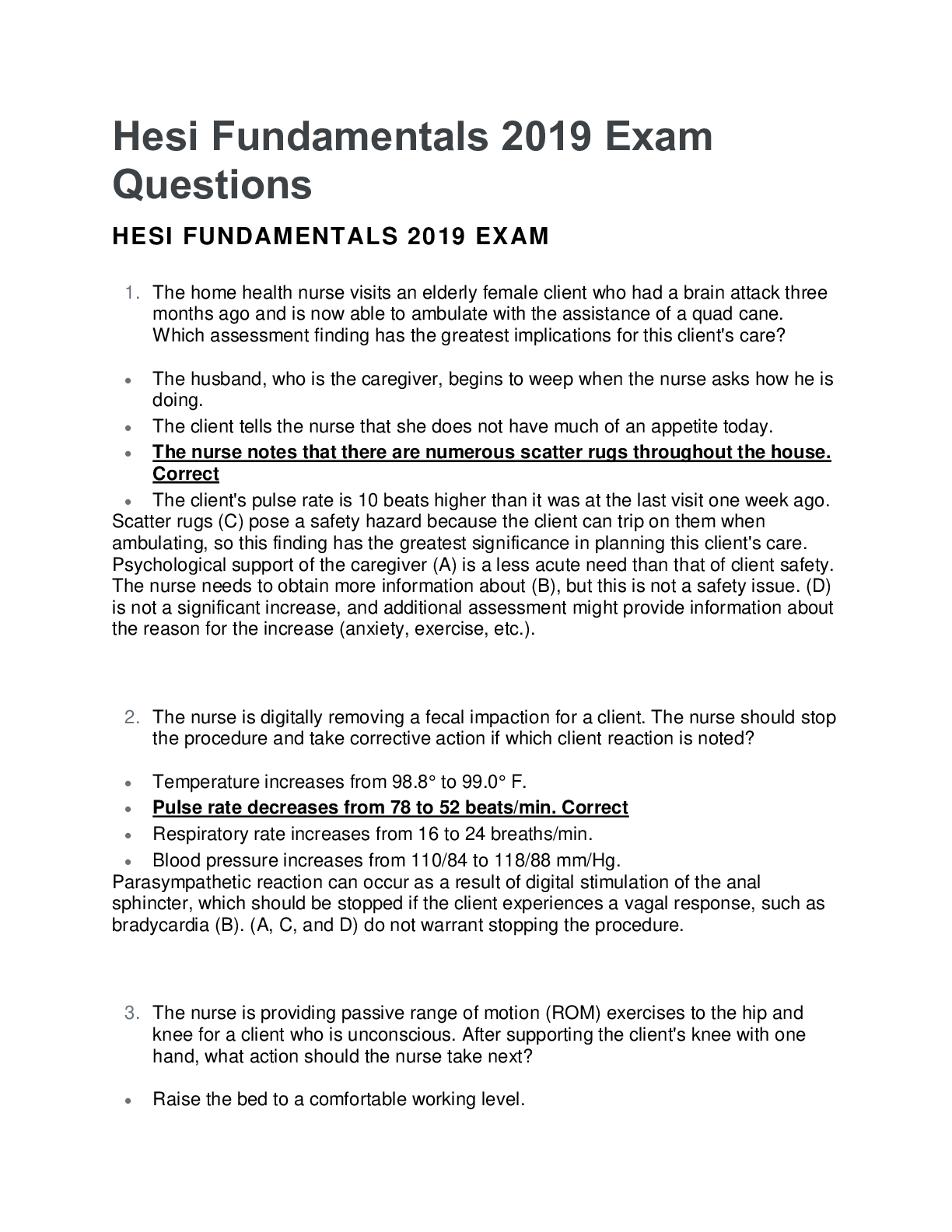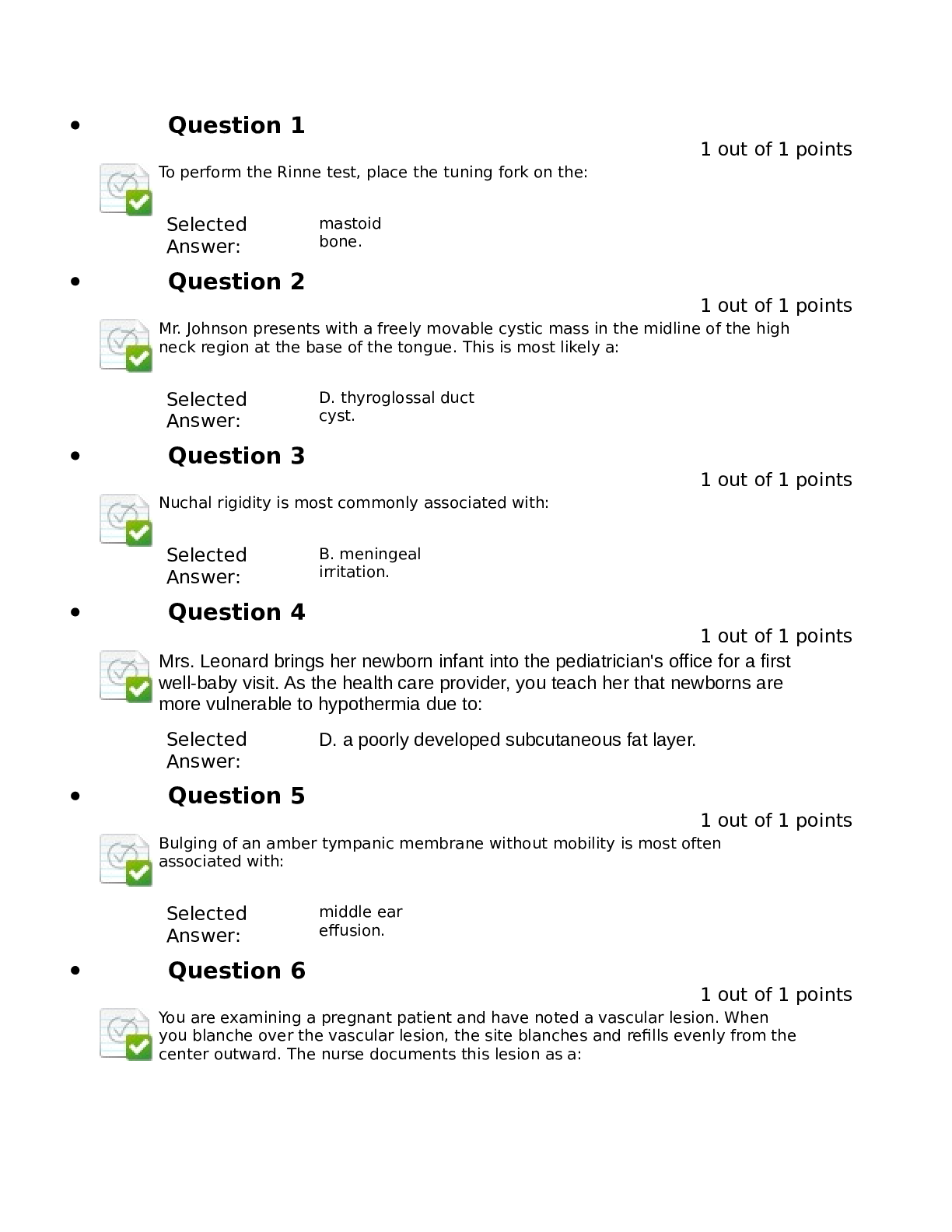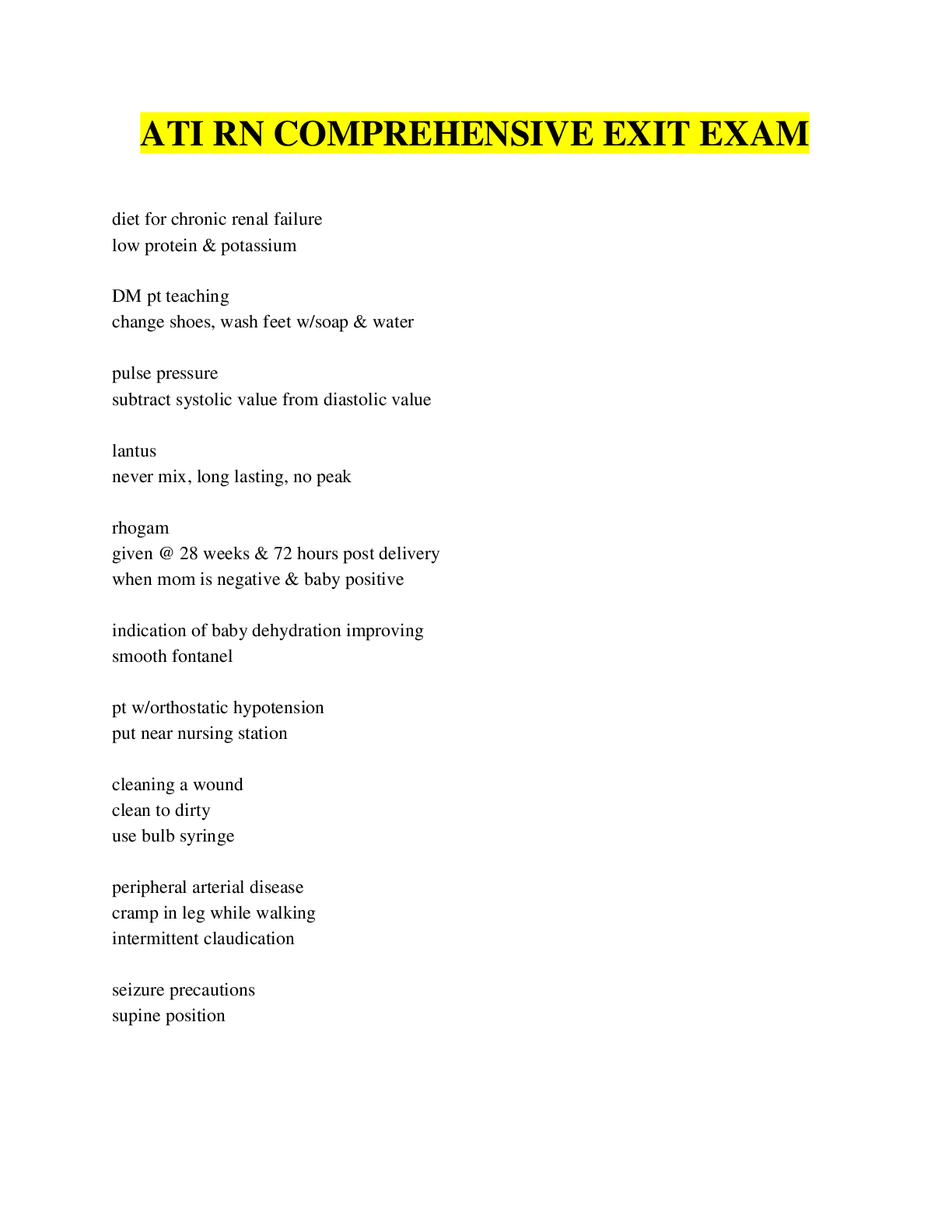Chemistry > QUESTIONS & ANSWERS > AQA A-Level Chemistry Past Paper Questions with Verified Answers (All)
AQA A-Level Chemistry Past Paper Questions with Verified Answers
Document Content and Description Below
AQA A-Level Chemistry Past Paper Questions with Verified Answers The sample is bombarded with high energy electrons and knocks out an electron forming 1+ rubidium ions through using an electron gun... . ✔✔Explain how the gaseous atoms of rubidium are ionized in a mass spectrometer(2) Rb(g)---Rb+(g)+e(-) ✔✔Write an equation, including state symbols, to show the process that occurs when the first ionization energy of rubidium is measured(1 1) Shake the final solution in the flask. 2)Ensure the bottom of the (liquid)meniscus is on the graduation mark. 3)Wash the wet rod into the flask. ✔✔Read the following instructions that describe how to make up a standard solution of a solid in a volumetric flask. Answer the questions which follow. "Take a clean 250cm3 volumetric flask. Use the balance provided and a clean, dry container, to weigh out the amount of solid required. Tip the solid into a clean, dry 250cm3 beaker and add about 100cm3 of distilled water. Use a stirring rod to help the solid dissolve, carefully breaking up any lumps of slid with the rod. When the solid has dissolved, pour the solution into the flask using a filter funnel. Add water to the flask until the level rises to the graduation mark" SUGGEST THREE FURTHER INSTRUCTIONS WHICH WOULD IMPROVE THE OVERALL TECHNIQUE IN THIS ACCOUNT.(3) Cu2(OH)2CO3+4HCL---2CuCl2+3H20+CO2 ✔✔Compounds containing Cu2+, OH- and CO3(2-) ions are sometimes described as basic copper carbonates (a) Solid Cu(OH)2CO3 is added to an excess of dilute hydrochloric acid. A solution of copper(2)chloride is formed, together with two other products. (i) Write an equation for the reaction. bubbles could be observed. ✔✔4a(ii) Suggest one observation which could be made during the reaction Simplest whole number ratio of the atoms of each element present in a compound. ✔✔Suggest what is meant by the term empirical formula(2) PV = nRT ✔✔State the ideal gas equation(1) The ability of an atom to attract a pair of electrons from a covalent bond. ✔✔Describe what is meant by the term, "electronegativity"(1) a covalent bond (a shared pair of electrons) in which both electrons come from the same atom. ✔✔Describe what is meant by "Dative Covalent" bonding(1) Hydrogen Bonding. Permanent dipole-dipole inter molecular interactions. Van der Waals forces. ✔✔Name the three types of inter molecular forces.(3) Explain how ions are accelerated, detected and have their abundance determined in a time of flight(TOF) mass spectrometer.(3) ✔✔An electric field accelerates the ions by attracting ions in the sample by the same amount of kinetic energy. They are detected by the gaining of electrons which sets up a current. The current flowing in the detector determines the abundance. In terms of structure and bonding, Explain why the boiling point of bromine is different from that of magnesium. Suggest why magnesium is a liquid over a much greater temperature range compared to bromine.(5) ✔✔1) Bromine is simple molecular. 2) Magnesium is metallic. 3)Bromine has weak van der waals forces between the molecules. 4)Therefore, more energy is needed to overcome the stronger bonds. 5)Magnesium has a greater liquid range because forces of attraction in molten metal is stronger. How do you work out percentage by mass. ✔✔Actual mass/theoretical mass x100 [Show More]
Last updated: 2 years ago
Preview 1 out of 4 pages
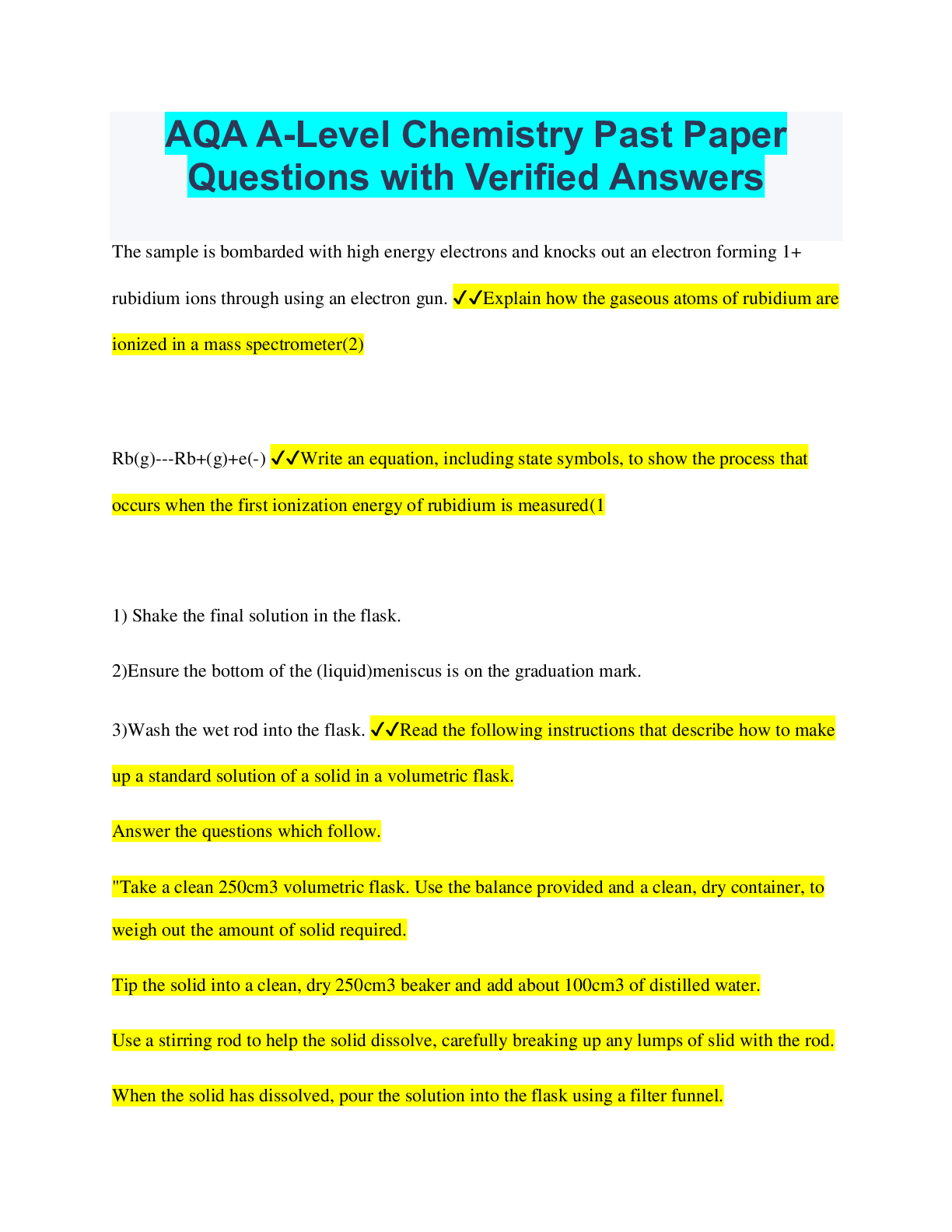
Buy this document to get the full access instantly
Instant Download Access after purchase
Buy NowInstant download
We Accept:

Also available in bundle (1)

AQA A LEVEL Chemistry Bundled Exams Questions and Answers 100% Pass
AQA A LEVEL Chemistry Bundled Exams Questions and Answers 100% Pass
By Nutmegs 2 years ago
$22
13
Reviews( 0 )
$8.00
Can't find what you want? Try our AI powered Search
Document information
Connected school, study & course
About the document
Uploaded On
May 07, 2023
Number of pages
4
Written in
Additional information
This document has been written for:
Uploaded
May 07, 2023
Downloads
0
Views
113












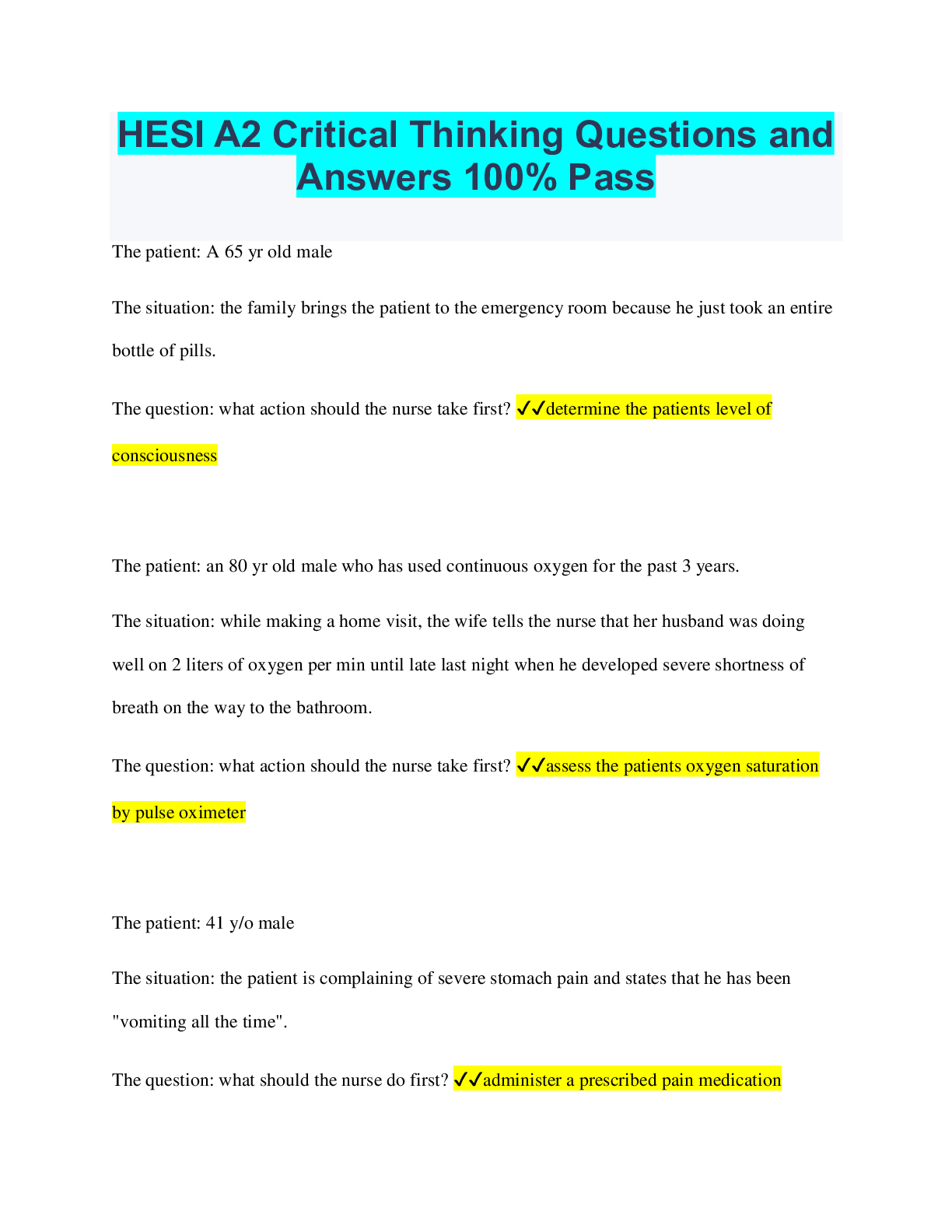


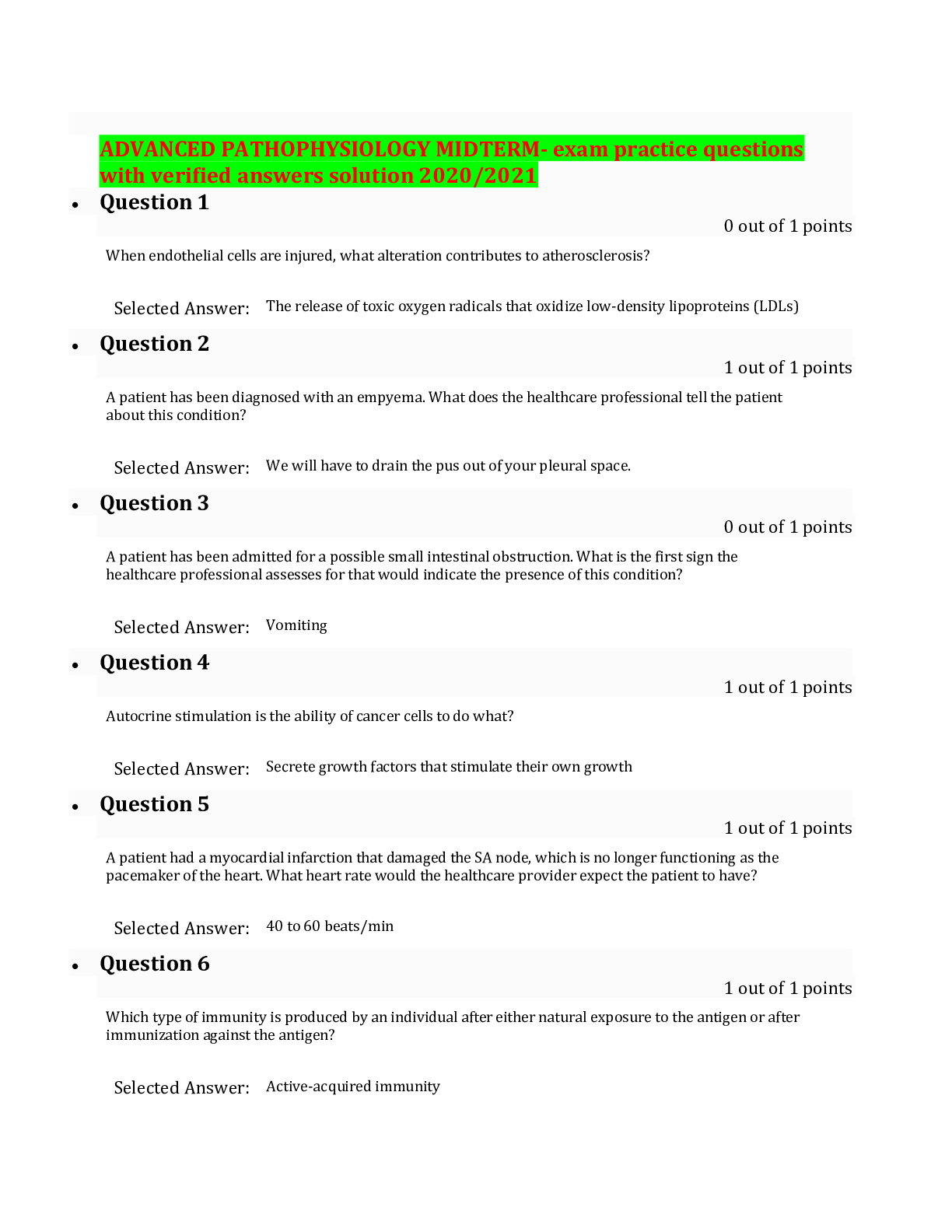


 2021.png)

.png)

